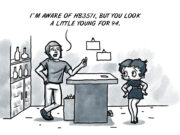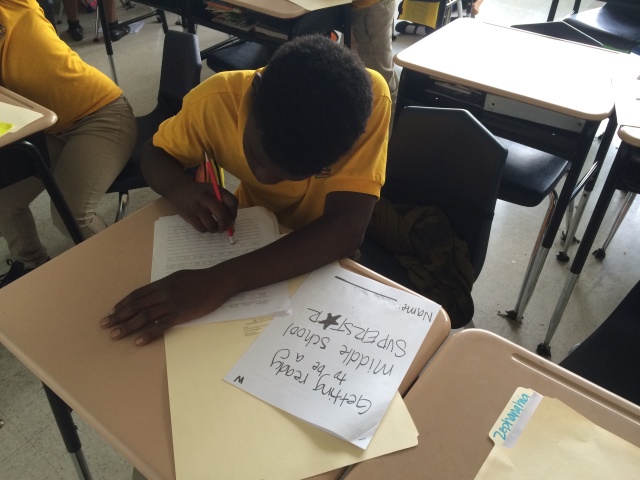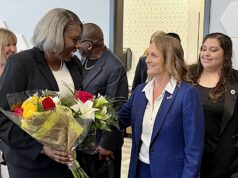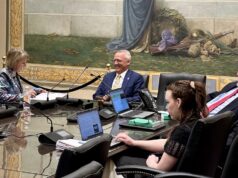
The most difficult and most emotional dispute in education is over the assessment of disciplinary consequences for student misconduct. The issue requires conversations about topics that our mothers used to tell us to avoid: race, class and other people’s parenting. Discussions are further complicated because they are rooted in the deep moral beliefs held by opposing stakeholders. All sides are sincere, and that can make it harder for people to disagree without becoming disagreeable.
Recent Oklahoma City Board of Education meetings on the district’s new Code of Conduct have become extremely angry. All sides agree that the OKCPS district has grown too reliant on suspensions. Punitive school policies feed the “school-to-prison pipeline.” Few would deny that the district needs a well-funded, aligned and coordinated set of socio-emotional student supports. How we get there from here is complicated; however, if the community could pull together to seek the resources necessary to create safe and orderly schools, it could be a major turning point for the OKCPS district and Oklahoma City as a whole.
Stresses undermine instruction
We can all agree that improved instruction and better professional development will reduce the number of disciplinary infractions. Also, as Superintendent Rob Neu says, high-stakes testing has undermined teaching and learning. The stress of the “test, sort, reward and punish” policies that have been imposed in the name of “reform,” combined with the stresses that are inevitable in a 90 percent low-income school system, have undermined teaching. Educators have been forced to focus on remediating students’ weaknesses, often to the point of blinding adults to those children’s strengths.
Neu added an especially profound footnote to the standard diagnosis of how testing has undercut engaging instruction: For over a decade, the misuse of “curriculum alignment” has forced teachers and students to rush skin-deep through the tested curriculum, making it difficult to explore the concepts that challenge students. The key to learning is loving, trusting relationships. Fill-in-the-bubble accountability has driven much of the greatest joy of learning from our schools.
‘Wraparound services’ are required
As is explained in my new book A Teacher’s Tale, Oklahoma City only has 13 census tracts meeting the definition of “extreme poverty,” but the most challenged schools in the OKCPS district serve those neighborhoods. As Mr. Neu explains, in schools with intense concentrations of children from generational poverty who have survived extreme trauma, “wraparound services” are required. I would add that an overwhelming body of social-science research explains why it is impossible to significantly improve teaching and learning in the highest challenged schools without first establishing such a system of socio-emotional supports.
Mr. Neu is also correct that misbehavior is a problem in all big school districts. When I served on the steering committee of the bipartisan coalition MAPS for Kids, the chief of staff of a major urban school district briefed us, saying discipline is not “a problem” that can be addressed. It is instead “a predicament” that can’t be rectified. No large school system, he warned, would try to touch the unsolvable predicament of disorder and violence. Unfortunately, there is too much truth in his prophesy, but if we learn from past experiences, maybe OKC can do what few systems attempt.
Improved instruction only goes so far
When I began teaching in the early 1990s, the standard mantra was that engaging instruction would head off most misconduct. Not many administrators or teachers really believed those words they felt compelled to recite, it was just one of the soundbites that had to be repeated in order to function in a grossly underfunded school system. On the other hand, a few educators and patrons really think that improved teaching and classroom management would solve most disciplinary problems. I strongly believe that those people are wrong, and that they are drastically overestimating how much improved instruction can decrease misbehavior. But they are unquestionably sincere. And, they are correct that better professional development and teaching supports can make a difference. The question is, how much of a difference?
Get out of the blame game
The hard truth, as Mr. Neu has told Oklahoma City, is that, “No one has the right to threaten the safety and civility of our schools. … Anyone who does, must be dealt with immediately.” And that brings us to the heart of the problem: When a relatively few or a large number of chronically disruptive students are robbing their classmates of an education, teachers can’t wait. There must be quick interventions so that the class can regain its momentum. Punishment is not the answer, but someone other than the teacher (who should not be excessively distracted from conducting class) must take over in a timely manner and help the misbehaving student get to the root of the problem.
We must get out of the blame game. We need high-quality early education. We need full-service community schools. We need an early warning system that addresses absenteeism before it becomes chronic truancy. We also need a sense of history.





















